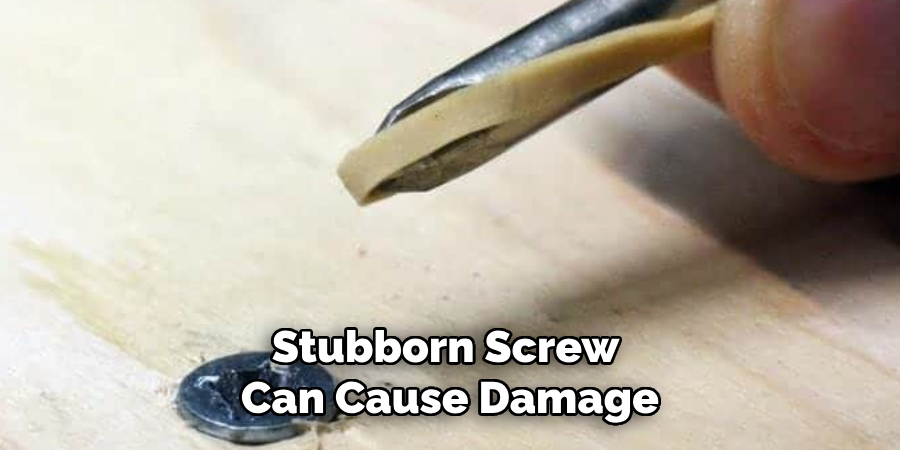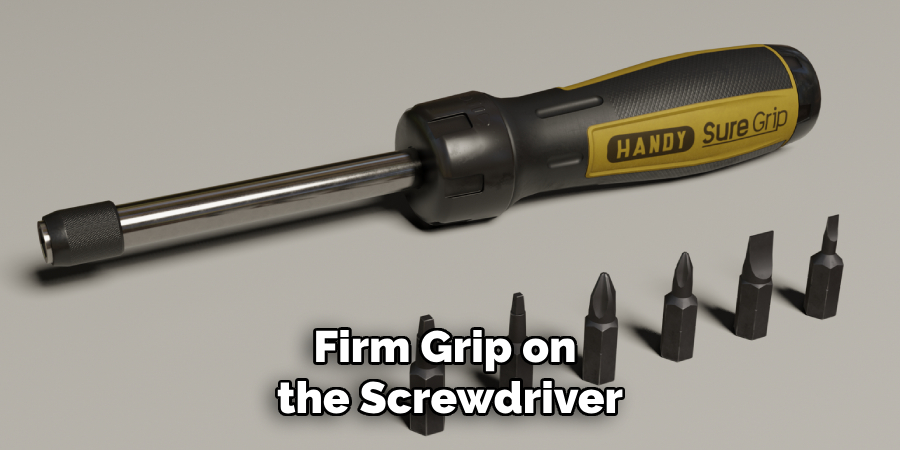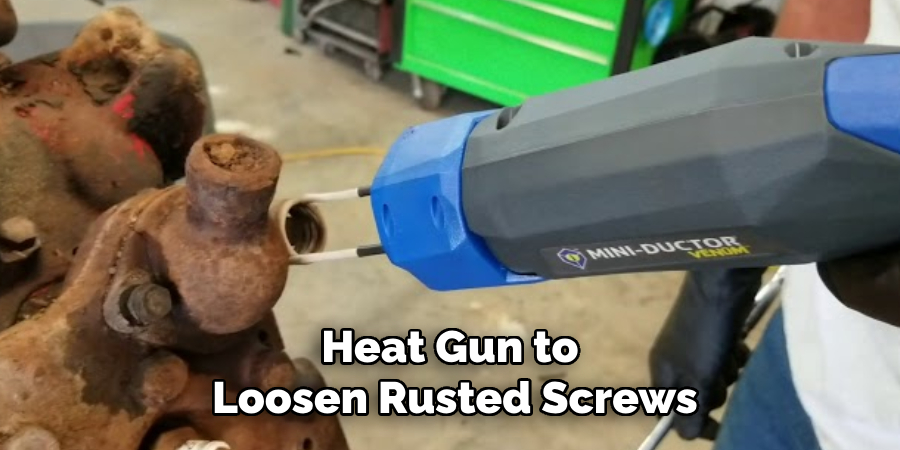Removing a screw from an iron can often be a challenging task, particularly if the screw is rusted or stripped. This guide aims to provide clear, step-by-step instructions to help you extract a screw with minimal hassle, preserving both the integrity of the screw and the iron.

Whether you’re a seasoned DIY enthusiast or a beginner tackling your first project, understanding the right techniques and tools can make the process much smoother. Proper preparation and patience are key elements in ensuring success, and this introduction on how to remove screw from iron will familiarize you with some foundational concepts to get started.
Why is It Important to Know How to Remove a Screw From Iron?
Knowing how to properly remove a screw from iron can save you time, money, and frustration in the long run. Attempting to force or drill out a stubborn screw can cause damage to your iron surface, making it difficult or even impossible to fix. Additionally, removing a screw incorrectly can also result in injury.
Let’s dive into the step-by-step process of successfully removing a screw from iron.
Needed Materials
Before beginning the process of removing a screw from the iron, gather the following materials to ensure you are well-prepared:
Screwdriver:
Depending on the type of screw, you will need either a flathead or Phillips screwdriver. Ensure the size of the screwdriver matches the head of the screw for a secure grip.
Pliers:
If the screw is stripped or rusted, pliers may be necessary to provide extra grip and torque when turning. Needle-nose pliers are particularly helpful for removing small screws.
Drill:
In some cases, drilling out a screw may be necessary if it cannot be loosened by traditional means. Make sure to have different drill bit sizes on hand to accommodate various types of screws.
Hammer:
A hammer can help loosen a stubborn screw by gently tapping around its edges. Be careful not to hit too hard as this could further damage the iron surface
8 Simple Step-by-step Guidelines on How to Remove Screw From Iron
Step 1: Assess the Situation
Begin by examining the screw and the surrounding iron surface. Determine the type of screw head, such as Phillips or flathead, to select the appropriate screwdriver. Check for signs of rust or stripping on the screw, as these factors may influence the approach you take.
Taking a moment to assess the condition can prevent further damage and help you choose the right tools and techniques for the task. If the screw appears particularly rusted or damaged, consider applying a penetrating oil and allowing it to sit for a few minutes to help loosen the screw before proceeding.
Step 2: Prepare Your Tools
Once you have assessed the situation, gather and prepare all necessary tools to ensure a smooth and effective process. Ensure that you have the correct screwdriver for the screw head type, whether it be Phillips or flathead, and that it is in good condition. Check that the pliers are functioning properly and clean, particularly if you anticipate needing extra grip.

If using a drill, select the appropriate drill bit size and ensure the drill is fully charged or connected to power, if applicable. Additionally, have a hammer ready should you need to gently loosen the screw’s grip on the iron surface. Organizing your workspace by having these tools at hand will save time and help you focus on the task without unnecessary interruptions.
Step 3: Place the Screwdriver
With your tools prepared, carefully place the screwdriver into the screw head, ensuring that it fits snugly. It’s crucial to apply firm yet gentle pressure to avoid stripping the screw further. For flathead screws, align the screwdriver with the single slot; for Phillips screws, position it within the cross-shaped indentation.
Maintain a steady hand as you work to keep the screwdriver aligned with the screw. If the screw is deeply set or rusted, patience is necessary to establish a secure connection without slipping. Proper placement of the screwdriver is essential for successfully loosening and turning the screw out of the iron surface.
Step 4: Turn the Screwdriver
With a firm grip on the screwdriver, begin turning it in a counterclockwise direction to loosen the screw. Apply consistent pressure and use your other hand to hold onto the iron surface for stability. If necessary, use pliers on the end of the screwdriver for additional torque when turning.
If you encounter resistance or a lack of movement, stop and reassess. Trying to force a stubborn screw can result in further damage or injury. Instead, move on to another step that may provide more leverage or seek assistance if needed.

Step 5: Try Tapping with a Hammer
If you are unable to successfully turn the screw with the screwdriver alone, try gently tapping around the edges of the screw with a hammer. The vibrations from the hammer may help loosen the grip of a particularly stubborn or rusted screw.
Be careful not to hit too hard, as this could damage the iron surface or strip the screw further. Use a light touch and gradually increase force if needed.
Step 6: Apply Penetrating Oil
If you have not already done so in step one, consider applying a penetrating oil such as WD-40 to help loosen a stuck screw. Spray directly onto and around the screw, allowing it to sit for several minutes before attempting to turn again. This can be especially helpful for old screws that have been in place for extended periods.
If using oil, be sure to clean the area thoroughly before proceeding to the next step.
Step 7: Use Pliers as a Last Resort
If all else fails, you may need to resort to using pliers to remove the screw. Carefully grip the head of the screw with the pliers and turn counterclockwise. Be cautious not to slip or apply too much force, as this could damage the surrounding iron surface.
Once loosened, use the screwdriver to continue turning until completely removed from the iron.
Step 8: Drill Out the Screw
In extreme cases, it may be necessary to drill out a screw that cannot be removed by traditional means. Using a drill and the appropriate bit size, carefully create a small hole in the center of the screw head. Then, use pliers or an easy-out tool to continue turning until the screw is loosened enough to remove with your hands or other tools.
Following these simple step-by-step guidelines on how to remove screw from iron can help you safely and effectively remove a screw from an iron. Remember to approach the task patiently, using proper tools and techniques, to avoid further damage and achieve the desired result. With practice and care, removing screws from the iron will become second nature. Happy fixing!

Frequently Asked Questions
Q: What if the Screw is Stuck Due to Rust or Damage?
A: If the screw appears particularly rusted or damaged, consider applying a penetrating oil and allowing it to sit for a few minutes to help loosen the screw before proceeding. This can make it easier to remove without causing further damage.
Q: Do I Need to Use a Drill if the Screw is Deeply Set or Rusted?
A: Not necessarily. Using a drill is only necessary in extreme cases where traditional methods have failed. It’s important to try other techniques and tools first before resorting to drilling, as it can cause more damage to the surrounding iron surface.
Q: Can I Reuse the Same Screw After Removal?
A: This depends on the condition of the screw after removal. If it appears damaged or stripped, it’s best to use a new screw for future projects. However, if the screw is still in good condition, it can be reused with proper care during removal and reinsertion. Additionally, it’s always a good idea to have spare screws on hand in case of damage or loss.
Q: What Other Tools Can I Use to Help Remove a Screw from Iron?
A: In addition to the tools mentioned in this guide, you can also try using an easy-out tool for stubborn or damaged screws, as well as a heat gun to loosen rusted screws. It’s important to use these tools with caution and follow proper safety precautions. If unsure, seek assistance from a professional.

Conclusion
Removing a screw from an iron may seem like a daunting task, but following these simple step-by-step guidelines on how to remove screw from iron can make the process much more manageable. It’s essential to take your time and assess the situation before proceeding, choose the appropriate tools, and use gentle yet firm pressure when turning the screw.
If all else fails, it’s okay to seek assistance or resort to alternative methods such as using penetrating oil or drilling out the screw. With practice and patience, you’ll become a pro at removing screws from iron in no time. Happy fixing!
Edmund Sumlin is a skilled author for Metal Fixes, bringing 6 years of expertise in crafting a wide range of metal fixtures. With a strong background in metalwork, Edmund’s knowledge spans various types of fixtures, from decorative pieces to functional hardware, blending precision with creativity. His passion for metalworking and design has made him a trusted resource in the industry.
Professional Focus:
- Expert in Metal Fixtures : Edmund aesthetic specializes in creating durable and innovative metal fixtures, offering both appeal and functionality. His work reflects a deep understanding of metalworking techniques and materials.
- Sustainability Advocate : He is dedicated to using sustainable practices, ensuring that every fixture is crafted with eco-friendly methods while maintaining high-quality standards.
In his writing for Metal Fixes, Edmund provides valuable insights into the latest trends, techniques, and practical advice for those passionate about metal fixtures, whether they are professionals or DIY enthusiasts. His focus on combining artistry with engineering helps others discover the true potential of metal in design.


